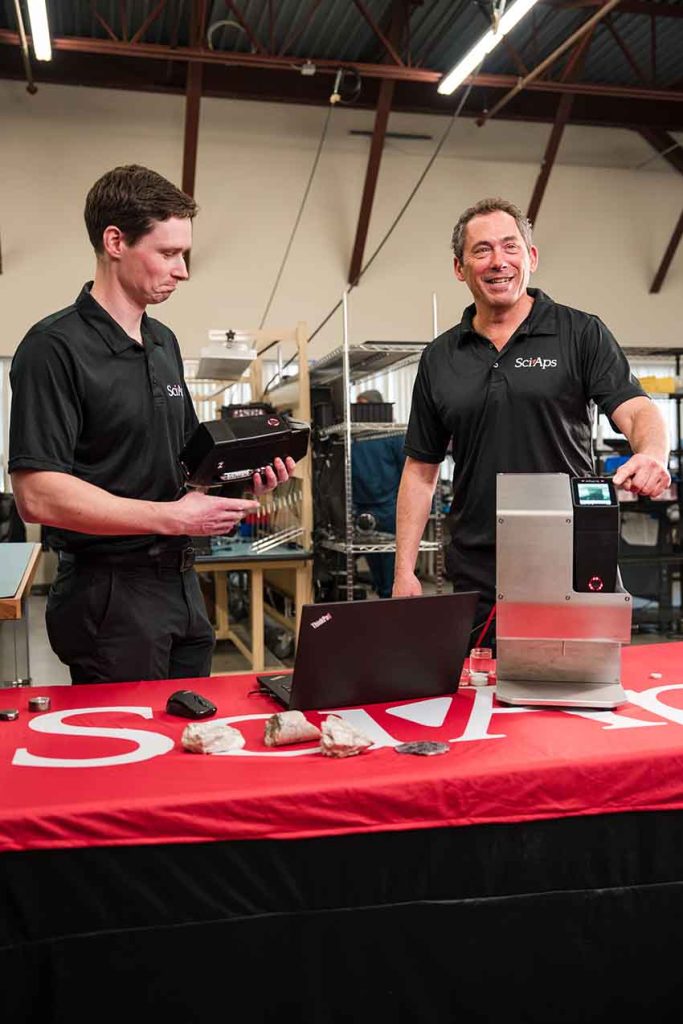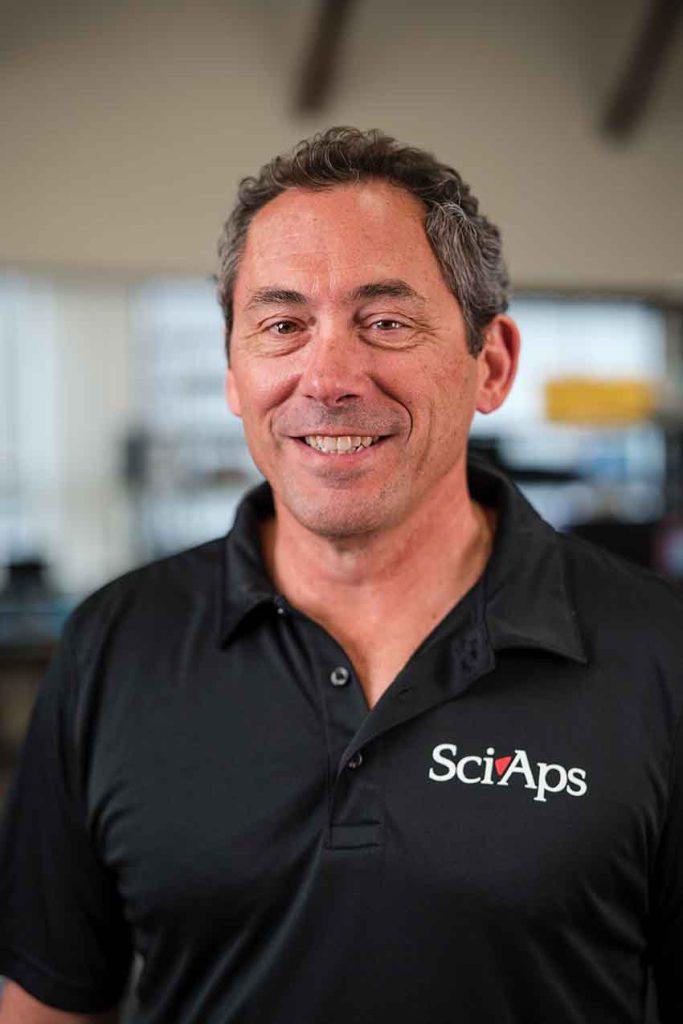SciAps is a Boston-based instrumentation company specializing in handheld portable analytical instruments to measure any element, any place on the planet. Their industry-leading X-ray fluorescence (XRF) and laser-based (LIBS) analyzers are at work across every major industry, including oil/gas, metals and mining, aerospace, battery, critical minerals, and strategic metals (lithium, rare-earth elements), scrap metal recycling, chemical and petrochemical, military, forensics, and law enforcement. SciAps instruments are configured to measure elements in all types of materials, so applications are always expanding, recently including space research, pandemic anti-viral coatings, agriculture, and environmental contaminants.
Interview with Don Sackett, CEO & Co-Founder of SciAps, Inc.
Easy Engineering: What are the main areas of activity of the company?
Don Sackett: The four main industries and how our analyzers serve them: Sorting of metals for the scrap recycling industry; lead paint testing; nondestructive testing (NDT) and positive materials identification (PMI) for manufacturing, welding, and fabricating for oil & gas, pipeline, aerospace, and pharmaceutical industries; and research, exploration, grade control, block modeling, and process optimization for geochemistry, mining, and battery and strategic metals industries.
E.E: What’s the news about new products?
D.S: We have so many new products to talk about. Our handheld LIBS analyzer the Z-903 is the only analyzer in the world that can measure lithium content in rocks and brines in a matter of seconds. As the search for lithium reserves intensifies to support the EV market, inexpensive, in-field, instant lithium analysis has become essential.
Along those lines, we’ve just introduced the Z-9 “Liquidator.” The Z-9 is the only field analyzer that analyzes Li in brines, along with other elements Na, Mg, B, Ca, and K. Brines are considered an alternative source of lithium. In fact, it was recently announced that south America holds 60% or more of the world’s lithium brines supply. An in-field analyzer to measure Li concentration is essential. The Z-9 Liquidator Station allows users to do in-field testing of lithium in brines. Before the Z-9, the only option for lithium analysis in brines was to send samples to laboratories for ICP analysis, a process which may require several weeks, making rapid decision making at the point of production impossible. Now, the Z-9 works with the Z-903 LIBS to make testing outcrops, cores, pressed pellets, etc. simple for scientists. The Z-9 can measure lithium content (and companion elements B, Mg, Na, K, and Ca) in brines down to 2-3 ppm.

We’re also pleased to announce breakthrough products in the environmental markets. The X-550 Pb analyzer for lead analysis in paint, soil, dust wipes, and soon water is the first XRF analyzer without a radioactive isotope that has achieved EPA and HUD acceptance for lead paint testing. Traditional technology required a radioactive source for these analyses, and SciAps has succeeded in developing an analyzer that eliminates these costly and dangerous radioactive materials. Lead-paint inspectors can now evaluate potential lead hazards, including lead-based paint, lead dust, lead in water, and/or lead in soil without the oversight and costs of radioactive isotopes.
Also new is the X-555 handheld X-ray fluorescence system. The X-555 features the most powerful X-ray tube in a handheld device and was developed specifically for analyzing rare earth elements (REEs). REEs are essential in a variety of “green economy” applications including the magnets that power the motors in electric vehicles, wind energy turbines, many solar panels, and most communications electronics both commercial and military.
While perhaps not brand new, SciAps is also proud to offer the world’s only handheld analyzer that measures carbon content in steels and stainless steel. The world depends on steel for many critical infrastructure projects – structural steel for infrastructure like bridges and buildings, pipelines both for oil/gas and the future “hydrogen highway,” and low carbon stainless for critical pharma, chemical, and gasoline refining. Knowing the carbon content in steel is critical for proper welding procedures. Incorrect welding means early catastrophic failures.
E.E: What are the ranges of products?
D.S: We have two main product series: The Z and X Series, with several analyzers at different price points and varying abilities in each series.
The Z-Series harnesses the power of LIBS: Handheld Laser Induced Breakdown Spectroscopy (HH LIBS). The Z is the ONLY high-precision laser-based gun for sophisticated analysis of ultra-low elemental concentrations in alloys, ores, brines, and powders, to basic material or scrap sorting.
The X-Series harnesses the power of X-Ray Fluorescence Spectroscopy (XRF). The X is the world’s lightest, smallest, fastest high-precision family of XRF guns. Weighing barely 3 lbs., they’re lightning fast, and can be used all day long without fatigue.
E.E: At what stage is the market where you are currently active?
D.S: Our markets span both existing and new. We serve scrap recycling, metals production, oil & gas, and mining and environmental which have been stalwart markets for decades. For these, we’ve brought a better, often disruptive technology – essentially a way to measure materials in the field in seconds, versus in the lab in weeks. Alternatively, the “green economy” has delivered many new markets that didn’t exist even two years ago. These include lithium and critical mineral exploration both for hard rocks and in brines, rare-earth elements for magnets, strategic metals for electronics and military usage. In fact, it was the pandemic of 2020 that exposed many of these supply chain weaknesses that in turn inspired new searches for many materials.
In some cases, the old meets the new. Our carbon analyzer was developed for the oil & gas industry, since verifying carbon content is critical to preventing explosions and fires in chemical plants and refineries. Soon after that, the US DOT launched the “Mega Rule” to improve pipeline safety, which requires extensive weld testing on pipelines to avoid ruptures and leaks. The key to preventing such failures – carbon content in steel and weldability. In the future, it is expected that the vast pipeline network will slowly get converted to hydrogen as the future energy source. Thus, pipeline safety is both in an old and new stage of markets. Our breakthrough technologies have disrupted 20+ years of the same old, same old in the scrap, lead paint, NDT/PMI, and geochemical/REE and Strategic Metals markets. In the past, their only options have been basic sorting of materials, radioactive testing, bulky spark OES, or laboratory analysis for precise measurements. Now, our analyzers offer accurate in-field testing of aluminum, lead paint, carbon, and lithium.
E.E: What can you tell us about market trends?
D.S: The scrap industry fluctuates with the prices of certain metals. That said there’s an interesting statistic out there. It says that in order to meet the carbon zero net emissions goal of 2050, humankind will have to find and process more metal in the next 27 years than humankind has processed and mined in the past 3,000 years. Metal recycling plays a major role, since the more metal we recycle, the less virgin ore we have to dig up.
The NDT market will continue to be crucial as well. Global energy demand is projected to increase 8% annually and oil & gas will continue to be a part of the solution for the planet’s energy requirements for decades.

The lead paint industry will be the fastest growing market due to the revitalization of urban areas and government initiatives to improve the health and safety in privately-owned homes of low-income families and Public Housing Agencies. There is currently a shortage of lead paint inspectors and independent contractors. Also, just in the past few days the USEPA has announced new rules reducing the amount of lead in dust in homes and schools. Our XRF can measure these levels of dust in wipes, thus providing immediate results.
Geochemical/REE and Strategic Metals markets will need to meet the global net-zero automobile emissions targets by 2050, which will require a significant increase in lithium to meet demand for batteries in electric vehicles. Brines offer a source of lithium that does not require the development of a new mine for hard rock production and are seen as a key component in the sourcing of the required lithium.
E.E: What are the most innovative products marketed?
D.S: Z-903 LIBS—the miniaturization of the laser technique is the world’s only handheld offering in-field measurement of lithium and other low atomic number elements. The device also measures any element from H to U.
Z-9 Liquidator Station—this is the only device capable of measuring lithium, boron, sodium, and other low atomic number elements in liquids. It is a critical product as the world turns to brines as a supply of lithium for the EV and related markets.
X-550 Pb—In search of a more cost-effective alternative with far lesser regulatory burden, the SciAps XRF technology team revisited prior industry research on lead paint testing. Because of the recent combination of X-ray tube technology and silicon detector technology, that past research was now viable. The team used past and current technology to develop an XRF analyzer to measure lead even underneath many layers of non-lead paint – the typical scenario in older homes and schools. The ability to accurately measure lead in paint underneath thick layers of non-lead paint was previously only available with a radioactive isotope.
E.E: What estimations do you have for 2023?
D.S: SciAps will continue its relentless pursuit of innovation. We will roll out additional and complementary field technologies capable of measuring organic compounds and minerals.

